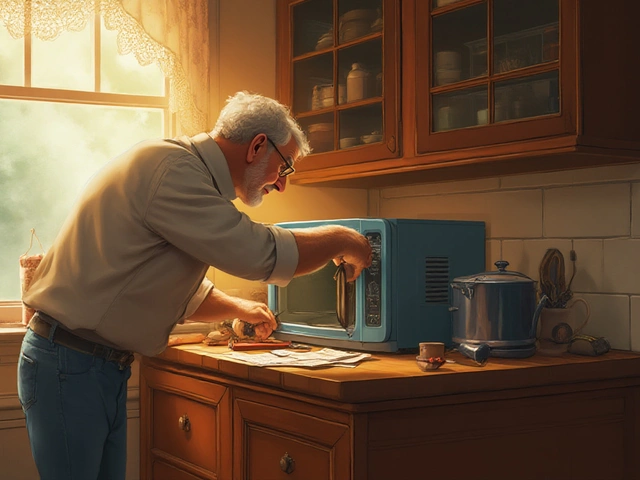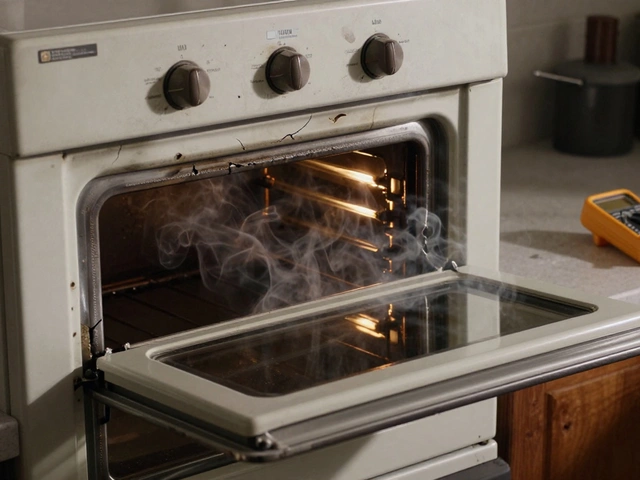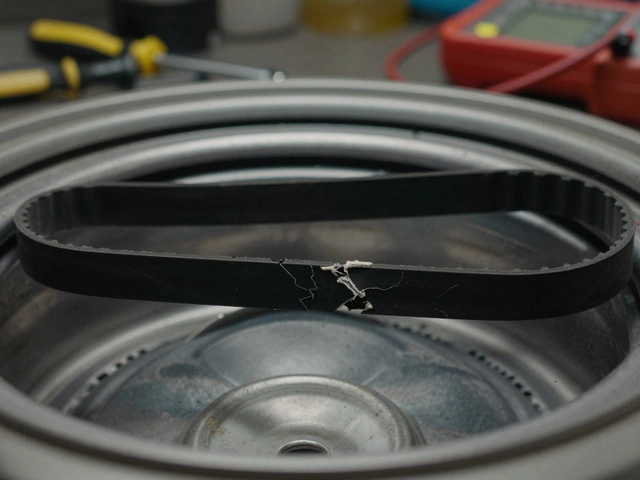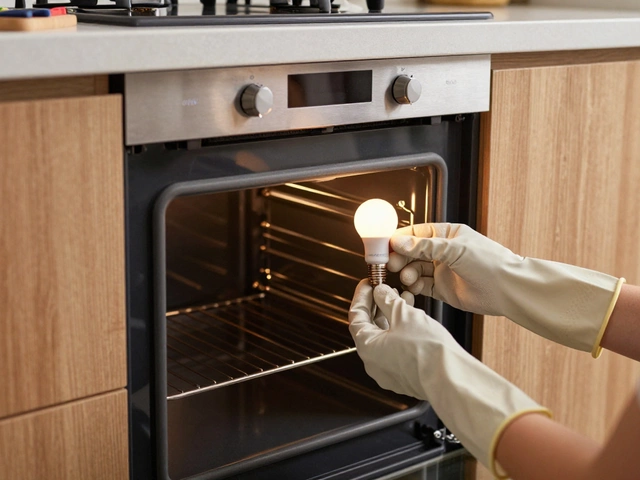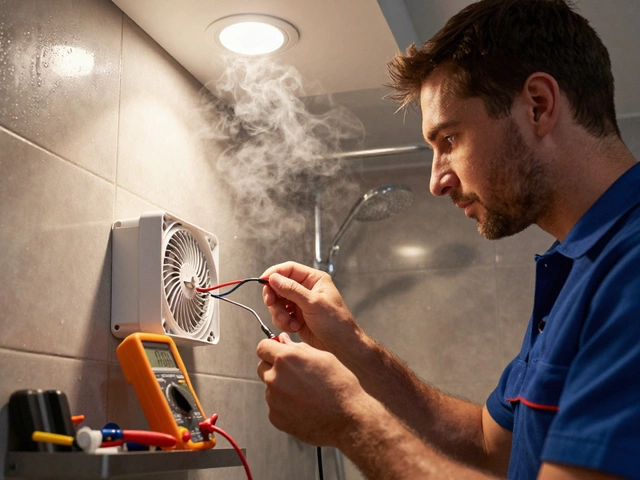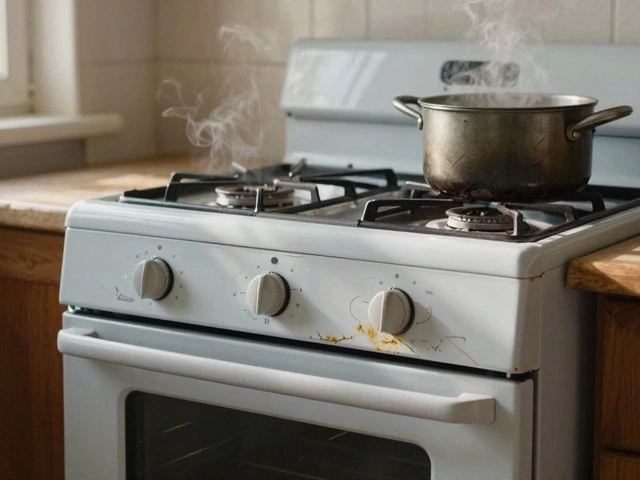Ever opened your oven door expecting a perfectly roasted chicken, only to find it barely warm or completely raw? That frustration isn’t just bad luck—it could be your oven screaming for help. Electric ovens aren’t immune to breakdowns and their warning signs are often hiding in plain sight. Knowing exactly what to look for can save you time, money, and a whole lot of ruined dinners. Instead of waiting for a technician to point out the obvious, you can start pinpointing the problem yourself with a little guidance and a curious eye.
Common Symptoms of Electric Oven Problems
If you know what to look for, your oven almost always gives you hints before it stops working. Start with the basics: is it heating up or is it dead quiet and cold? Most electric ovens show their issues through predictable symptoms. A classic one—oven won’t heat up. Or, maybe it heats up but the temperature is off by 50 degrees, which you only discover after your dinner comes out undercooked. Another sign is when your oven takes forever to preheat, which sucks all the excitement out of baking cookies. Some folks report their ovens tripping the breaker, leaving the kitchen dark just when you’re about to use the appliance.
Another nuisance is uneven cooking: cookies burnt on one edge but pale white on the other. This is usually the oven crying for a new heating element or a recalibration. There are also blinking lights, odd error codes on the digital display, or mysterious beeping in the middle of the night. Sometimes, you’ll notice the oven light refuses to turn on or stays on forever, even after you close the door firmly. If you’re seeing sparks, that’s a red flag—unplug the oven and call a pro now.
Keep your ears open for strange noises. Electric ovens generally don’t hum, rattle, or buzz. Unusual sounds can mean a faulty fan or loose components inside the oven. Many folks surprisingly ignore the smell; any odd burnt, chemical, or wiring odor means trouble. And don’t forget: if your oven stops responding to the controls or buttons stick, that might point to an issue with the control board.
Pinpointing the Cause: Simple Checks You Can Do
Let’s get practical: before you panic or call for repair, there are some checks you can do without fancy tools or risking your safety. Safety tip: always unplug the oven before poking around. First, check the power outlet. You’d be shocked how often a tripped breaker, loose power plug, or faulty outlet is all that’s wrong. Confirm the control panel settings—sometimes a simple mistake like the timer being set or the oven stuck in ‘demo mode’ is to blame.
If your oven doesn’t heat up, peek through the inner window and check if the heating element glows red when turned on. If not, the element may be shot. When the oven doesn’t maintain consistent heat, a faulty temperature sensor might be the issue. Try another trick: put an oven thermometer on the middle rack and compare the displayed temperature with the oven’s set temperature. If it’s off by more than 25 degrees, the thermostat or the sensor might be on its last legs.
For ovens with digital displays, pay attention to error codes. Manufacturers hide clues in those codes—grab your manual or visit their website for a list. Don’t skip the basics: check the oven door seal (gasket) for rips or gaps, which can leak heat and mess with temperatures. On the topic of smells, burning plastics or electrical odors can signal a wiring short or insulation inside the oven failing—these are not issues to ignore.
If the oven’s light refuses to work, try replacing the bulb before blaming the wiring. If controls feel sticky or unresponsive, the issue could be with worn-out buttons or a misbehaving touchpad, sometimes fixable with a quick clean. Watch for condensation inside the oven window after use; if it’s foggy or dripping, the door may not close tightly enough to seal in heat.

When to Tackle Repairs Yourself and When to Call a Pro
Walk into any hardware store, and you’ll spot DIY kits for oven repairs. While swapping a burnt-out bulb or replacing a simple heating element is doable, there are clear limits to what’s safe. Here’s a golden rule: if you have to touch wires, deal with circuits, or unscrew panels attached to the main power, set the tools down and call a licensed technician. Electrical components carry risks you shouldn’t underestimate.
Many parts, like oven racks or door gaskets, are made for quick swaps and come with step-by-step guides in the manual or online. Heating element replacements, in some oven models, take nothing more than a screwdriver and patience. But the moment you walk into territory like the control board, sensor wiring, or the internal fuse, things get dicey fast. Attempting those without the right know-how could short out the oven or, worse, cause injuries.
If you see persistent error codes or the oven trips the breaker repeatedly, call for professional help. The oven’s built-in diagnostics can reveal problems, but interpreting them or clearing them sometimes requires special tools or software. If the glass on your oven door cracks, don’t try to replace it yourself—broken glass can cut deep and requires precise fitting. Remember, some repairs may even void your warranty, so read your manual before tackling anything major.
And don’t try to save money by fiddling with the wiring. In a study from 2022, UK fire departments traced over 150 kitchen fires to DIY electrical appliance repairs gone wrong, with ovens being the most common culprit. If you’re ever guessing or watching a third YouTube video because the first two confused you, that’s a sign to ask for help. Professionals can spot hidden issues before they become real safety nightmares.
Useful Tips to Keep Your Electric Oven Out of Trouble
Most oven headaches are preventable with a bit of routine care. Wipe up spills and crumbs right after cooking—grimy oven floors can burn and create smoky smells. Every few months, inspect the door gasket for debris or damage and wipe it down with a damp cloth. Use only oven-safe cleaners; harsh chemicals can damage sensitive sensors and finishes.
Check your oven’s manuals. There’s usually a self-diagnostic mode—running it twice a year helps spot potential problems before they escalate. Using surge protectors for your kitchen appliances can extend their lifespan, especially in areas with inconsistent voltage. Be gentle when closing your oven door—slamming can loosen or weaken the seal.
If you notice uneven cooking frequently, try rotating trays during use. Don’t use aluminum foil to line the bottom; it can block airflow or even short the heating element if it touches live wires. Run your oven’s self-cleaning cycle if it has one, but make sure the room is well-ventilated, and never leave the house during the cleaning cycle, as it can trigger smoke or even small fires if excess grease is left inside.
Stay alert for the small changes: new buzzes, different smells, or how fast your food cooks. The earlier you spot a change, the easier and cheaper it’s to fix. And keep an oven thermometer in your toolkit to check for hidden temperature troubles. If you write down error codes or odd behaviors as they appear, it gives repair pros a head start in solving the problem.
Your electric oven is the workhorse of the kitchen, but it can’t tell you exactly what’s wrong. Keep a sharp eye—and nose—on any changes and you’ll spot those oven problems before they wreck dinner or leave you with a cold, sad pizza.




